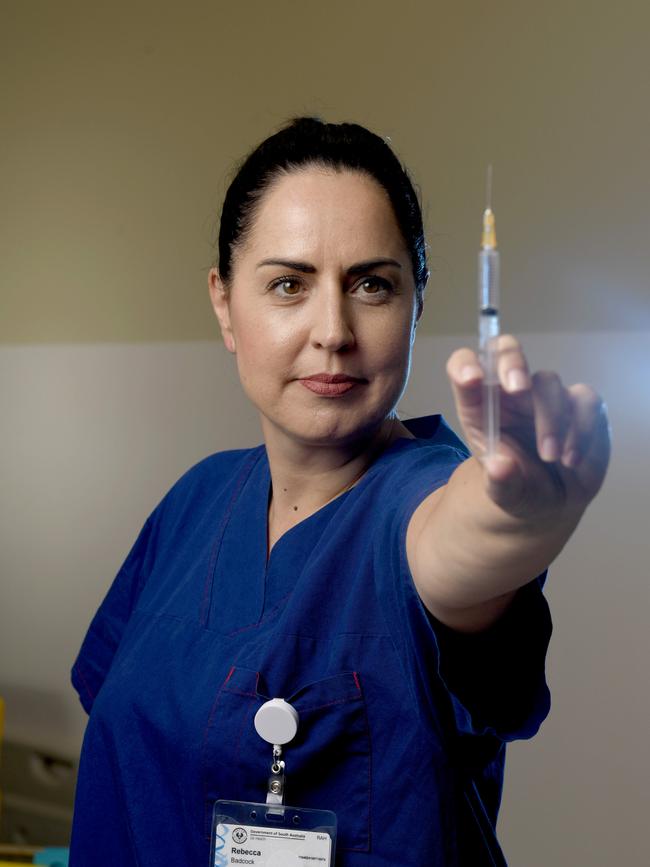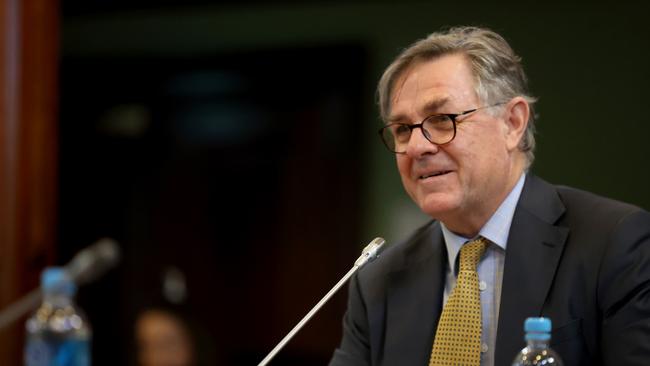Brad Crouch: There have been plenty of top level SA Health farewell parties
SA Health has lost three top executives in a matter of weeks, writes Brad Crouch. So what does that mean for the state’s health system?
Opinion
Don't miss out on the headlines from Opinion. Followed categories will be added to My News.
SA Health’s loss of three senior executives in a matter of weeks has raised eyebrows.
It comes amid a pandemic, record ambulance ramping and chronically clogged EDs — but also needs to be seen in context.
Central Adelaide Local Health Network’s (CALHN) executive director of nursing Rebecca Badcock has resigned to work in the private sector, Southern Adelaide Local Health Network chief executive Sue O’Neill has also resigned while mental health boss John Mendoza left expressing frustration over mental health care.

Opposition health spokesman Chris Picton notes the departure of these three key figures is a “huge loss for a health system under unprecedented pressure”.
However, the agency has some 44,000 workers, people do come and go, and the best always will be courted by the private sector.
As CALHN boss Lesley Dwyer says, their staff become “very desirable and highly sought after to provide similar value somewhere else.”
She also says: “I know that some of you might be thinking this shows that we may be reverting to having instability of leadership, but nothing could be further from the truth.”
That instability will be familiar to people even with fairly short memories
In February 2017 under the headline Departure Lounge, The Advertiser reported that since Labor started its Transforming Health reforms, 11 senior executives had left — not all lured by private sector paypackets, including:
JULIA Squire, CALHN chief executive sacked 16 months into a five-year contract amid claims of failure to collaborate over the new RAH project;
DAVID Swan, SA Health chief executive, quit to take a job in the private sector;
JENNY Richter, SA Health deputy chief executive, resigned and replaced by Vickie Kaminski, who went on to replace David Swan as chief executive;
JUDITH Carr, resigned as project director of the new Royal Adelaide Hospital project;
ANDREW Neilsen, resigned as RAH program director;
DR David Panter, resigned as CALHN chief executive in 2015 to work in the private sector, was a pivotal figure in the new RAH project;
ROBERT Morton, quit suddenly in 2015 after 18 months as SA Ambulance Service chief executive after being headhunted from Ireland.
STEVE Moro, resigned as Director of Procurement for the new RAH;
KEN Barr, sacked as SA Pathology boss in 2016 over the prostate cancer test misdiagnosis scandal, has since claimed he was a scapegoat;
PROFESSOR Peter Bardy, resigned as RAH head of cancer in 2016 amid chemotherapy bungle scandal;
DR Dewald Behrens, resigned as clinical director of Modbury Hospital’s ED in 2016 in frustration over Transforming Health reforms to downgrade the hospital but continued to work at Modbury as a clinician.

Since then, Jackie Hanson, the head of the Northern Adelaide Local Health Network, quit following the Oakden scandal, Vickie Kaminski has been replaced as SA Health chief executive by Dr Chris McGowan, SA Ambulance Service boss Jason Killens left for a job in Wales and was replaced by David Place, while SA Health Chief Pharmacist Steve Morris left to become chief executive at NPS MedicineWise.
If you go back to 2012 The Advertiser had a similar run down of SA Health senior executives who had left within a few months, under the headline “Revolving Door”. They included
Flinders Medical Centre head of emergency Dr Di King, Queen Elizabeth Hospital
general manager Linda South, Central Adelaide Local Health Network chief executive Brian Rousseau, Repatriation General Hospital general manager Jackie Howard while Royal Adelaide Hospital general manager Professor Villis Marshall announced he would retire.
That was back when John Hill was health minister and Martin Hamilton-Smith was the Opposition spokesman, who commented at the time: “The Department of Health seems to be in constant crisis as senior managers vote with their feet.’’
Times and governments change, and so do senior executives in the vast SA Health network.





